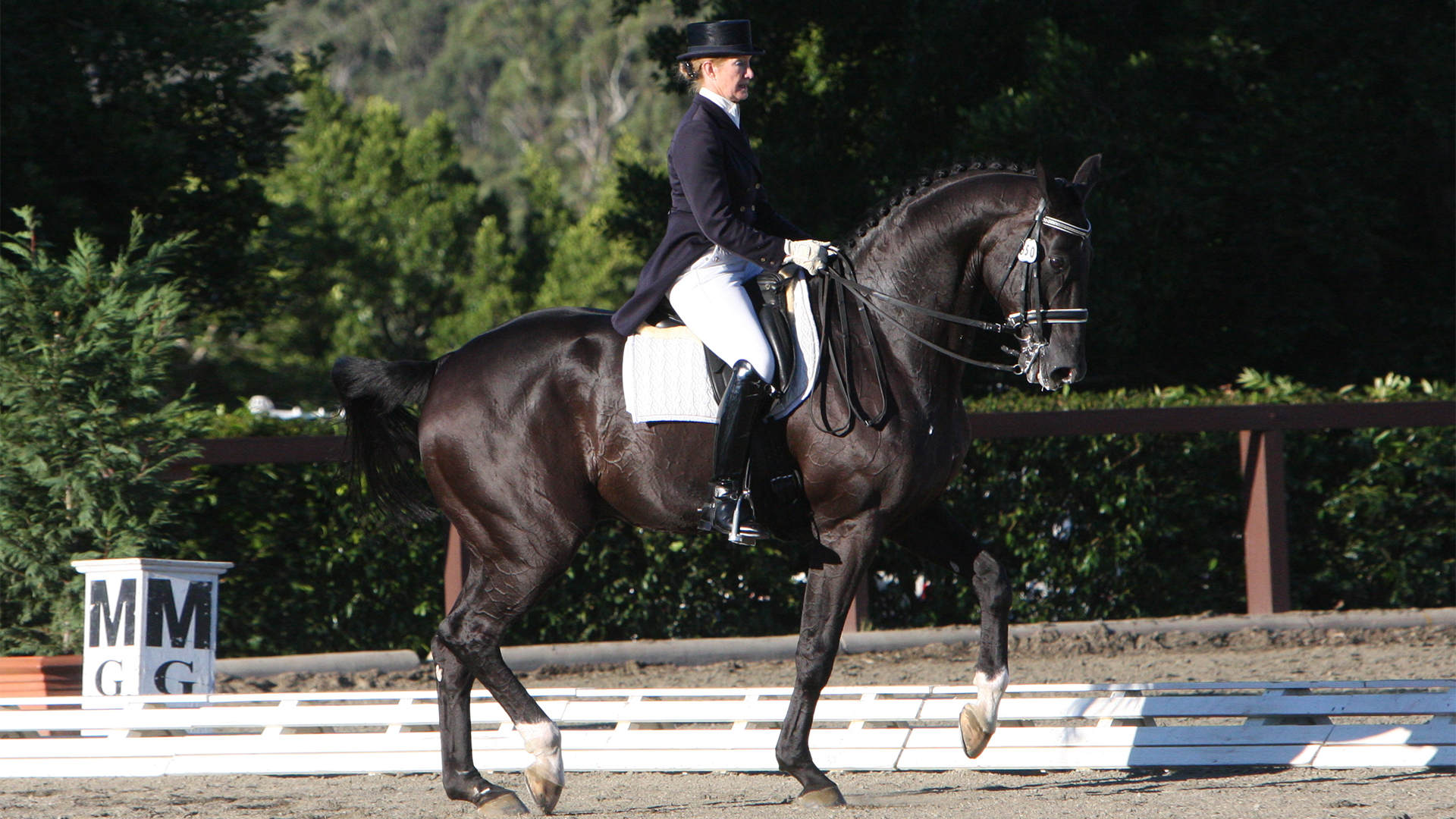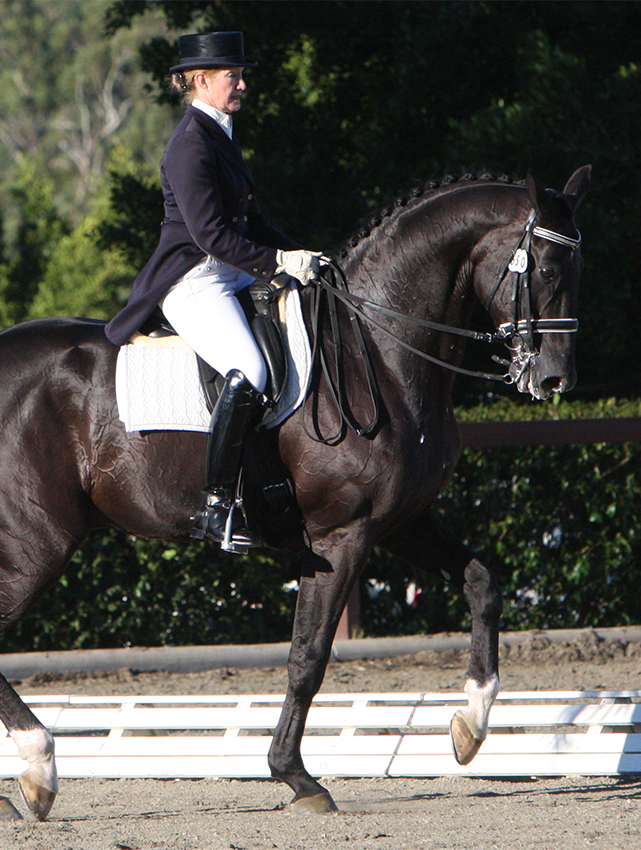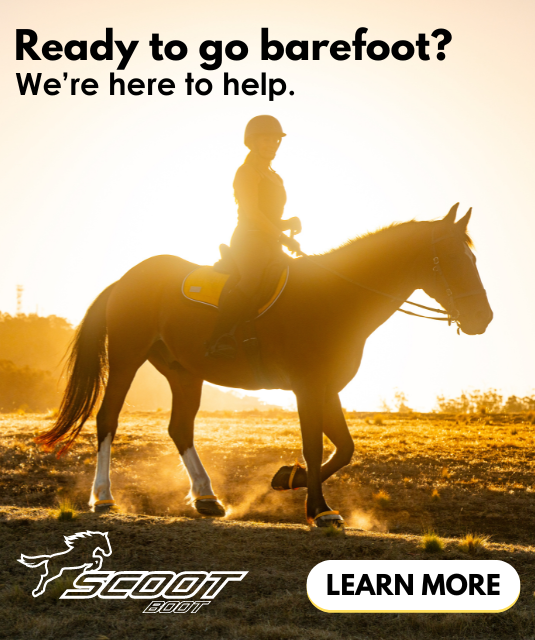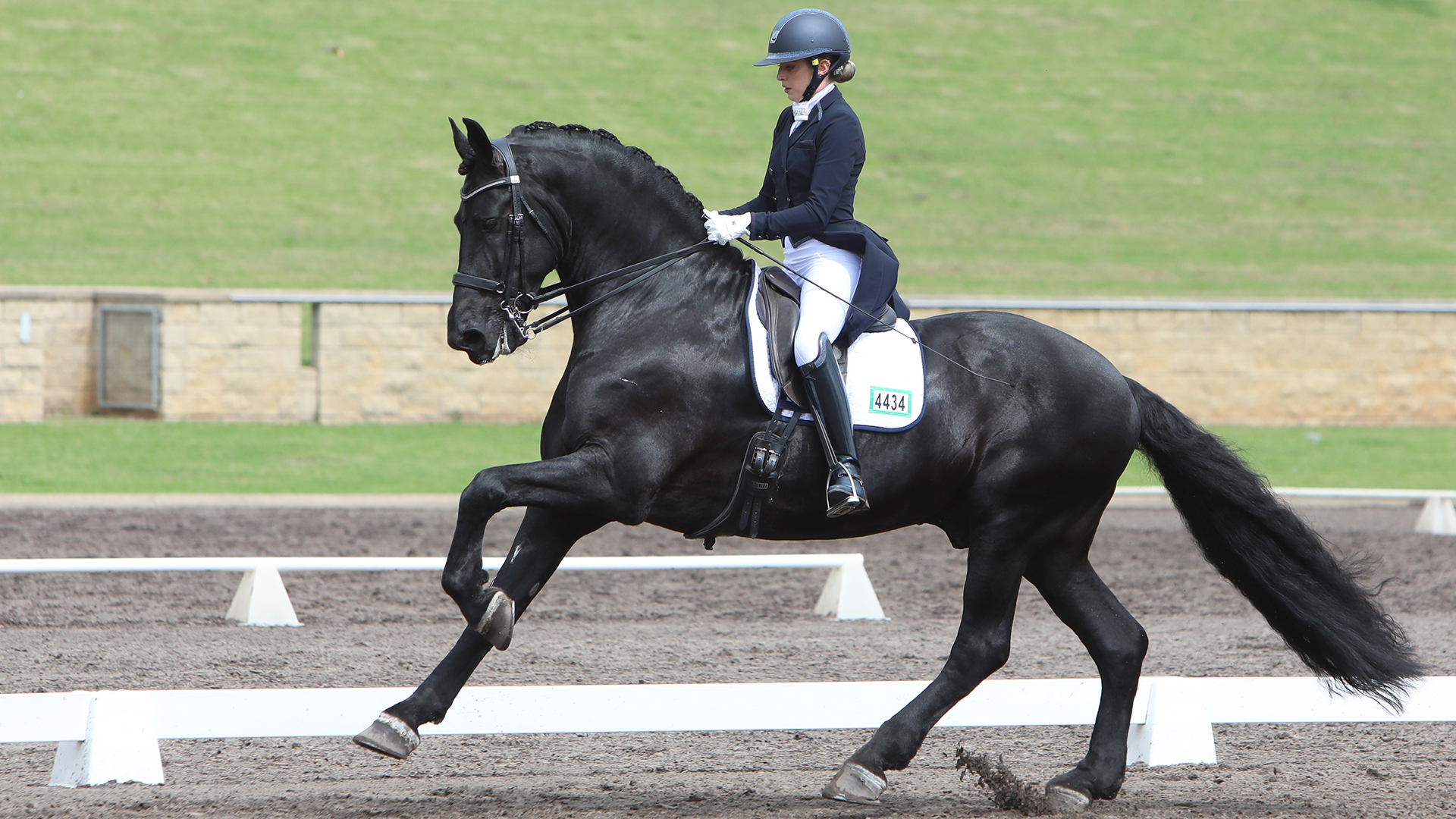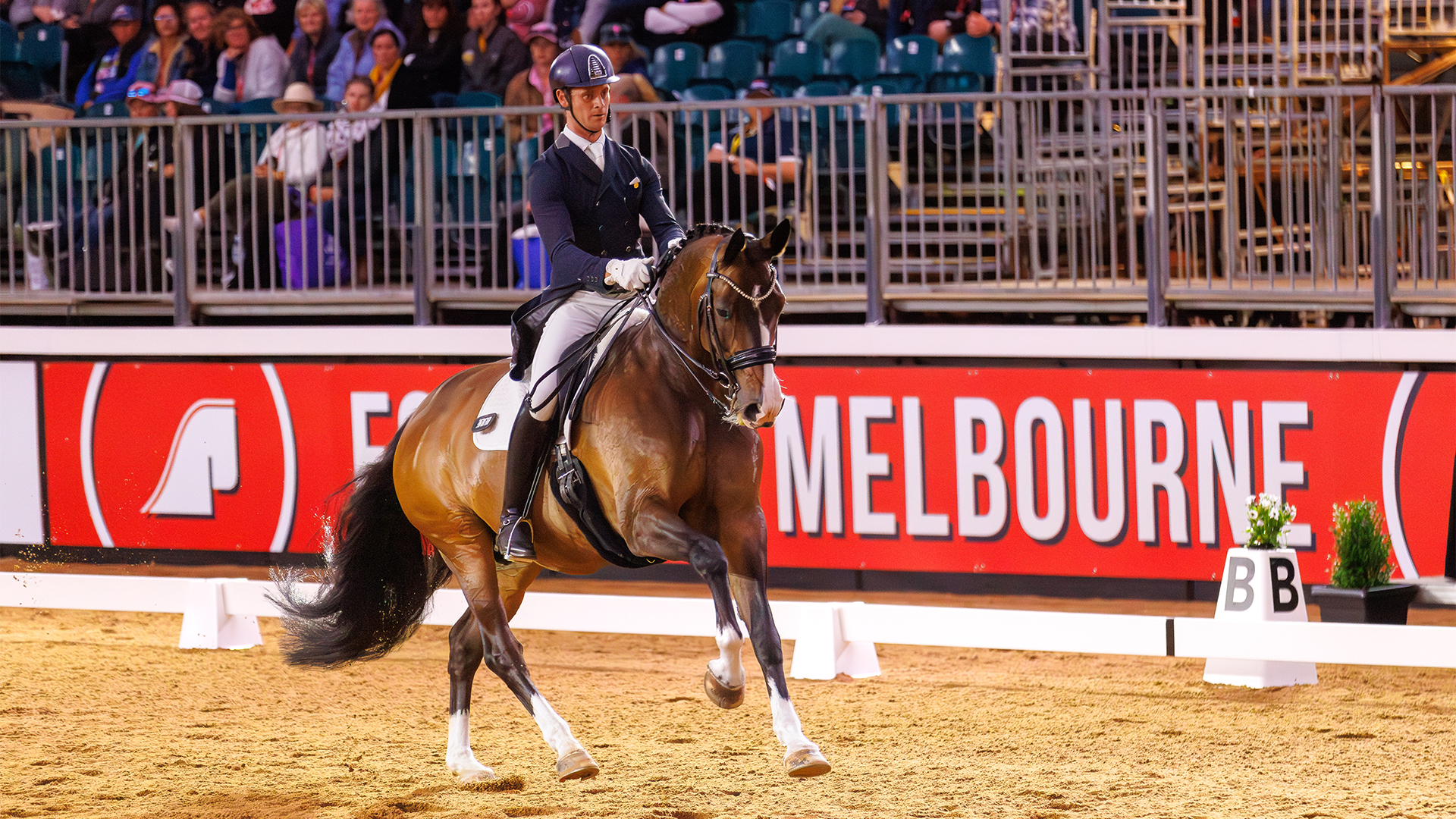Of all the Grand Prix movements, passage may be one of the trickiest to learn for both horse and rider. Three top trainers discuss their methods, and all agree on one simple principle: it takes time.
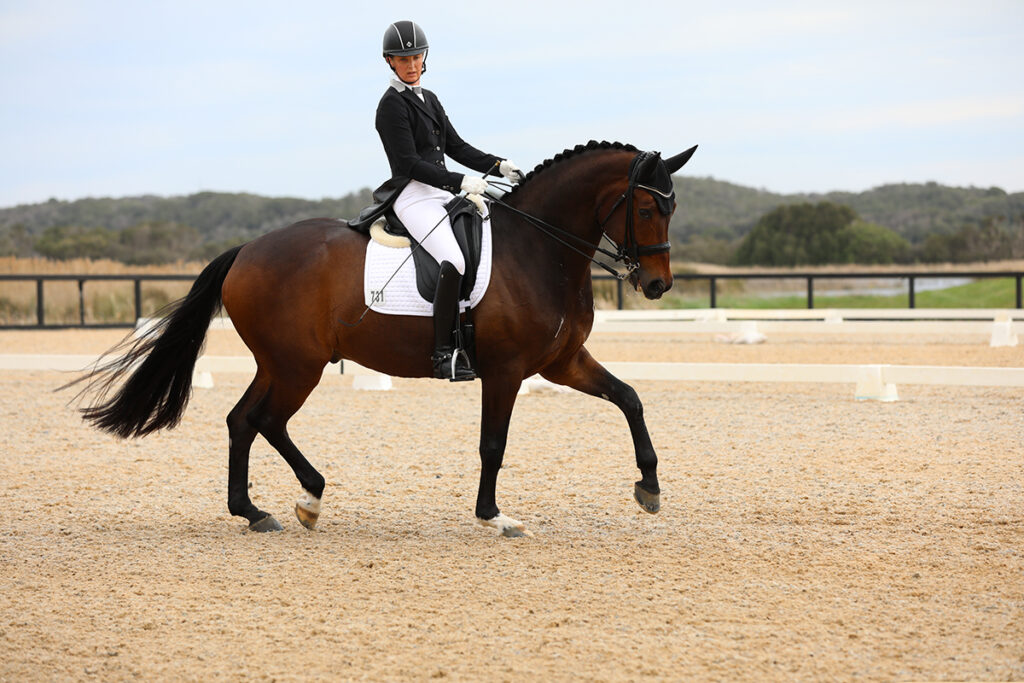
A good collected trot is a prerequisite to passage. Image by Roger Fitzhardinge.
VANESSA WAY
Vanessa Way is an international rider who has represented New Zealand internationally and is also an outstanding coach who often comes to Australia. She is an advocate of the training scale and has worked closely with British dressage great Carl Hester for many years. Vanessa has a keen interest in the development of the sport and is devoted to her students’ progress. She’s a fabulous person with a well-rounded outlook and has many approaches for preparing and making the first steps of passage.
“Of course, before you can even consider riding passage, you must have a horse that is understanding of the half halt,” says Vanessa. “Understanding of collection. Understanding of the meaning of compression, engagement, and impulsion. And above all, they must have an understanding of being in front of the leg. Of course, all these words and topics could be an article in their own entity. If you have these ingredients in your horse, then the steps toward passage should be fairly simple.
“I teach passage from rising trot. I do carry a whip, provided my horse understands that the whip is not a form of punishment, but simply an added aid. In rising trot your horse already understands collection and extension, so when you think about coming back to passage, what you are trying to do is improve the cadence or the elevation and airtime within the period of suspension in the trot.
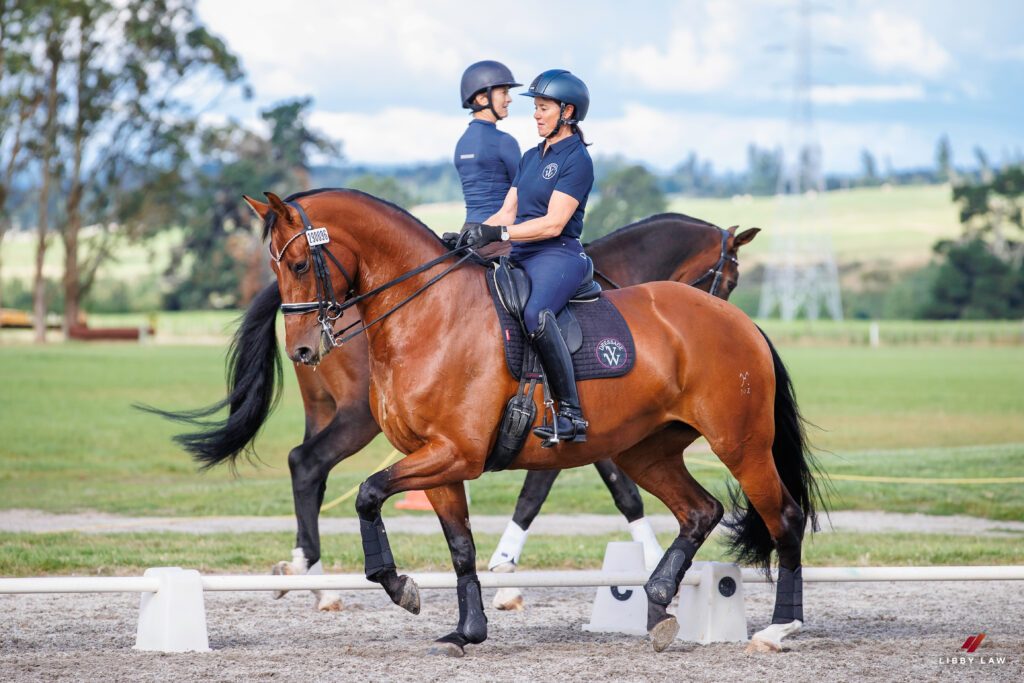
Vanessa Way has represented New Zealand and trained many horses to Grand Prix. Image by Libby Law Photography.
“In the passage, begin with just one or two steps and then forward out of it in rising trot. You can continue to produce a few more steps at a time, but never hold it for too long because once the steps become slow, the passage will lose quality. I must emphasise I teach piaffe and passage as separate entities. Walk to piaffe, trot to passage. Then when it comes time to knit the two together, for passage-trot I would go rising trot to passage to walk to piaffe to trot; for piaffe-passage, I’d go from sitting trot-type piaffe steps, and then rise as I take the horse forward out of that with impulsion and forward, uphill desire and the rise helps establish those first few steps of passage. This is how I knit the piaffe and passage transitions together.
“I love training passage and as every person knows, horses have certain abilities and highlights in their gaits. With a horse with plenty of cadence in the trot, the passage will become easy, but be careful not to let it get too slow.
“With the horses that don’t have a natural ability to contain the trot and have an uplifting feeling for the cadence steps, there are other ways you can start to develop it, especially with riders who don’t have the feeling of passage. Elevated trot rails a little closer together will help give the feeling of the passage. I also do this in rising trot and I touch the horse on the top of the croup, as this doesn’t make one leg snappy as it does if you use it behind your leg on one side.
“As you approach a puddle or section of water on an arena, this is always a great opportunity to encourage the cadence steps and to get the feel for a nervous rider perhaps who hasn’t felt passage. Of course lateral work – shoulder-in, travers, renvers and suppling and engaging exercises to get the horse confident and strong and obedient – is the ingredient before you mix it together to make passage. If you don’t have any of these ingredients you can’t make passage. Just as you need ingredients to make a cake, you need ingredients to make passage: straightness, collection, engagement, enthusiasm… Good luck and good riding, and repeat and repeat and repeat and never forget reactions to be brisk to the rider and always in an upward forward feeling to the hand.”
CLEMENS DIERKS
The name ‘Dierks’ is synonymous with dressage in Australia and Clemens has coached many riders and horses to Grand Prix. He rode in Germany as a young man and became a Beireiter (a prestigious Germany qualification) at the age of 17, before emigrating to Australia and marrying Judy Turner in 1970. Judy Dierks has of course represented Australia at the World Young Horse Championships and World Equestrian Games.
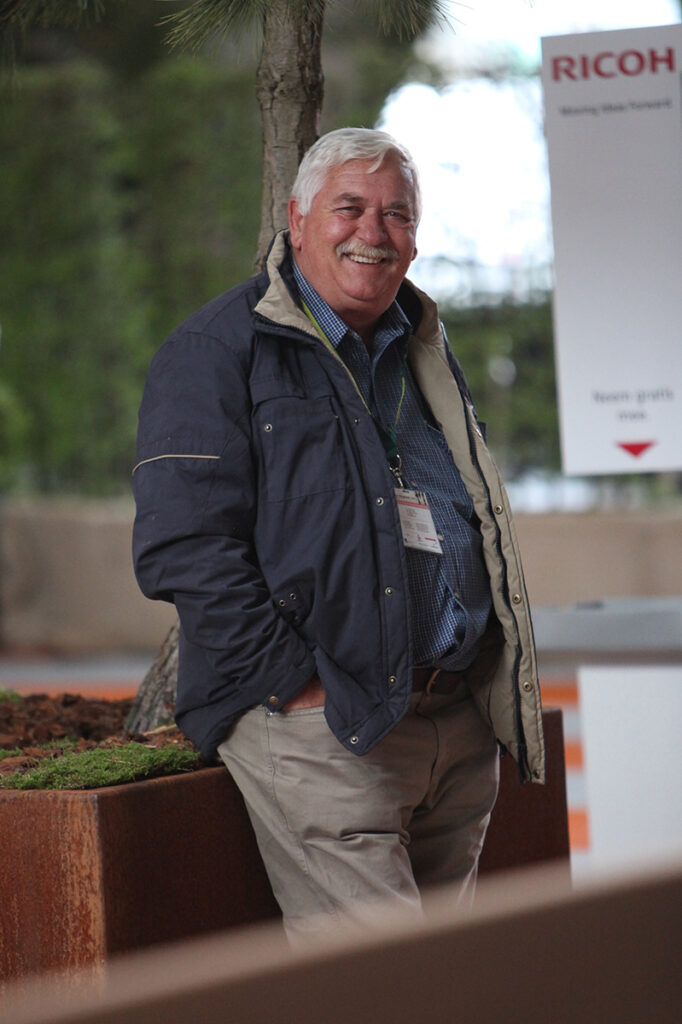
Clemens Dierks has coached many riders and horses to Grand Prix. Image by Roger Fitzhardinge.
“I would always teach horses to
do piaffe before passage…”
Together they established one of the best and largest high-level training facilities in Australia. Clemens sis compete as a show jumper and later in the dressage arena, but demand for his coaching took over. A former national coach for Australia and New Zealand, his expertise is recognised worldwide. Clemens is an expert in training all the Grand Prix movements but is renowned for teaching piaffe and especially passage. He has probably trained more horses to piaffe and passage than any trainer in Australia, from Arabs to Thoroughbreds to Warmbloods and every breed in between.
I ask Clemens how he initially starts the passage. He rolls his eyes and isn’t sure where to start. “I would always teach horses to do piaffe before passage,” he begins. “Half steps and short steps are very important. You don’t just teach passage. It is a development of the collected trot. I start to train passage as soon as the horse understands the basic aids of being on the bit, going forward and back in balance, and understanding a half halt.
“There is no given time that you actually teach passage. The horse will let you know to a certain degree when it is ready and capable. I’m not saying that every horse has a natural ability to passage, but every horse has an ability to be trained. The correctness of the training and the understanding between horse and rider will eventually enable passage steps.
“It is very hard to put how you train the initial steps of passage into words, as I find it only a complete development of the collected trot. When they are strong enough in balance, it happens through the development of the aids and feeling. On the bit, impulsion, balance over the hind leg, confidence in the horse, a desire to work forward to the rider’s contact, understanding and feel. Passage is simply a combination of all these things with a little more power.
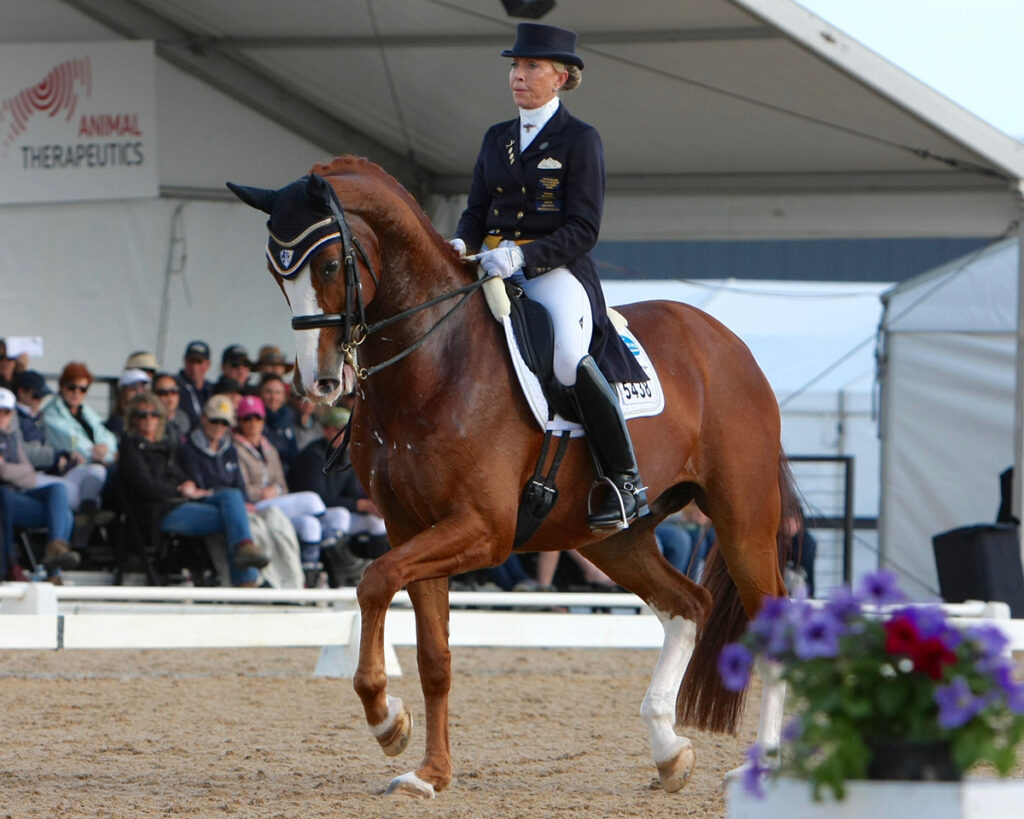
Judy Dierks and Diamond Star. Image by Roger Fitzhardinge.
“The difference between the aids for collected trot and the aids for passage is simply a positive feeling. Passage involves all the aids for collected trot with a little more power from the rider’s thoughts to have the horse more forward, and with collection and half halts to divert that forward power into an upward power and cadence.
“Passage is always in front of the leg and always adjustable. I’m not saying that every horse has this ability to passage, and of course with horses that have problems in producing this there are many different ways of encouraging a horse to gain confidence and cadence to produce passage. The list of these ways is endless, but usually it’s because one of the important basics or ingredients isn’t in place. Every horse and rider have different ways and feelings of getting into this movement. Some horses never really have a good passage. It’s just part of riding, it is just part of horses.
“A classical passage has a feeling of power and forwardness in a self-carrying lightness. It’s not a weak feeling and it is a movement that, as I have said, develops with strength and correct training. The horse will let you know when the degree of collection is ready to be put forward and upwards into passage. It’s not something that happens in one session; it is an outcome of dedicated training.”
SUE HEARN
Sue Hearn represented Australia at the Rio Olympic Games and many of her horses have competed to Grand Prix. Their forte was always the piaffe and the passage. Sue has a talent for all the Grand Prix movements, but an outstanding talent in the passage, so who better to ask for her thoughts about training it?
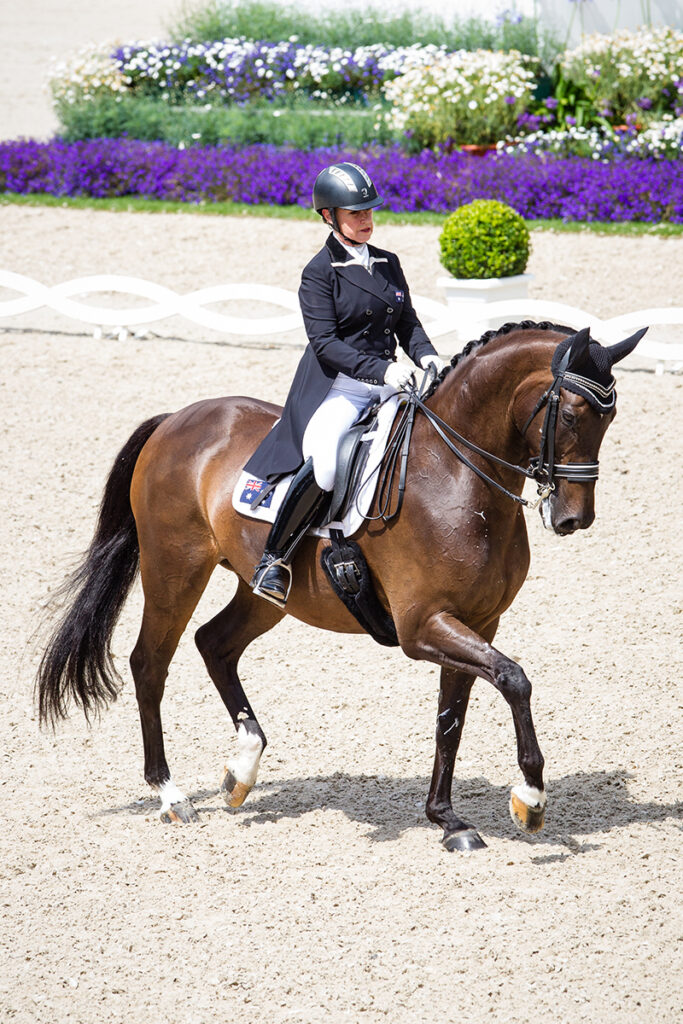
Sue Hearn and Remmington competing at CHIO Aachen. Image by Eric Knoll.
“This is a very difficult question and doesn’t have a simple answer,” begins Sue. “Every single horse is different and needs to be taken on his own merits. Every rider has certain abilities and certain experience and certain feels. So putting a horse and rider together to produce passage isn’t always easy.
“Primarily every horse needs correct training in the basics. The most essential of these basics is for a horse to stay in front of the rider. In other words, the horse must be prepared, at any moment, with any movement, to take the rider in a forward and upwards direction. No matter what, the horse must be accepting of stepping out of that position and taking forward momentum.
“For developing passage, it is important to have a very good collected trot. Some horses, on developing a good collected trot, will start to offer cadenced steps. These are the ones that remain easy to teach passage, but be careful that they don’t get behind the rider. For horses that don’t have a natural ability for passage, I was taught by Miguel Tavora, along very classical ways of introducing lateral work, to create more power and engagement and lighten the forehand. With this in mind and this attitude from your horse in the basic exercises, it will enable him to come up into passage.
“My favourite exercise of all for producing passage is travers into renvers into travers, and so on. I start travers on a circle, and I make certain that I can always ride that travers forward. If I can’t ride it forward maintaining the position, straighten and a little leg to make the horse jump up in front of you. Then proceed back to travers and try and get that feeling.
“When I ride renvers, I ride it on the long side to start with and make sure I have the same feeling that I can get forward within the movement, and if not then I’d simply forfeit everything and go forward. My horses must always take me forward, so I then have the chance of making good half halts to convert that impulsive, forward energy into a lateral exercise, piaffe, passage, or changes.
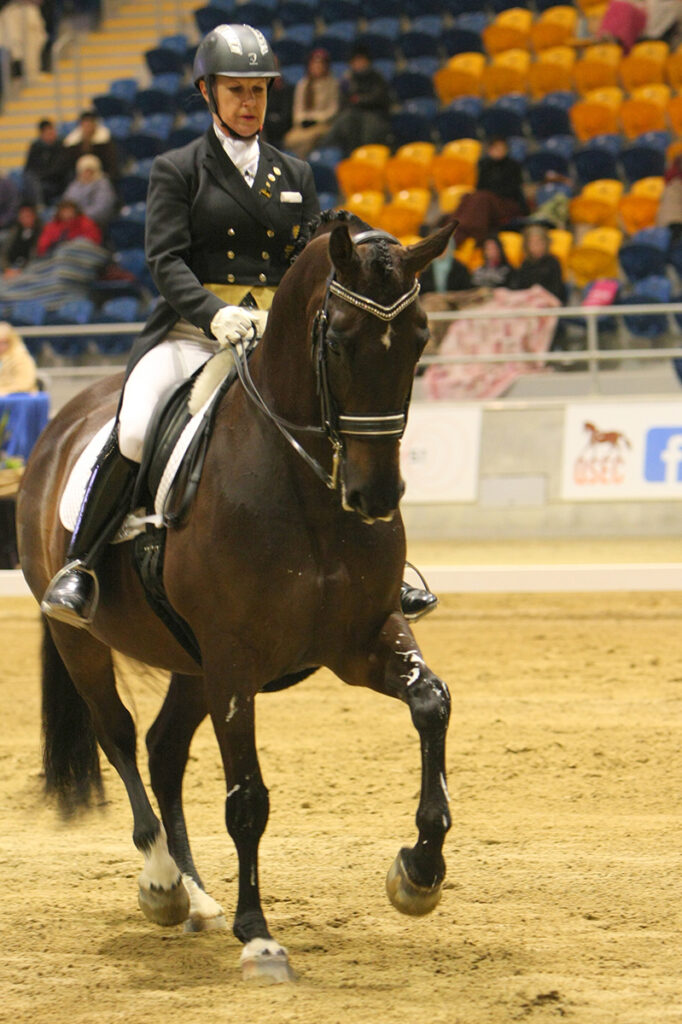
Sue and Remmington in passage. Image by Roger Fitzhardinge.
“Once I’ve established the travers and renvers in the individual capacities, I knit them together on a circle. Travers right on a right-hand circle to renvers left on that right-hand circle, straighten onto your circle and ride forward on that circle with continuing strength and uphill balance; when a horse instinctively wants to go forward out of the exercise, by maintaining your half halts and encouraging that desire to create a more upward feeling, the passage steps start to develop.
“Passage isn’t an exercise you
could create in one day…”
“I can’t say strongly enough that this takes time. Passage isn’t an exercise you could create in one day and it sometimes takes years of confidence, strength, suppleness, and engagement before this eventuates. Remember some horses are better than others at it. I believe every horse can show a degree of passage and this exercise that I learned from Miguel Tavora for me is the magic tool for those horses that find it difficult.
“I don’t train the passage from the ground, although I do initially try the piaffe in hand. With several of my horses, I’ve developed the passage from the piaffe. I always make piaffe first before passage. Then from piaffe steps, never feeling that it’s on the spot but always having a forward desire, I can take the piaffe steps into bigger, forward steps and develop the passage this way.
“As I said initially, there are many ways to develop passage. If you’re riding passage for the first time or attempting it you need to have good eyes on the ground and you need to have a good understanding of the suppling and lateral exercises that will take you into the passage feeling. My horses always stay light to my leg for passage because I don’t let them get behind me. I do love to coach and train passage!” EQ
